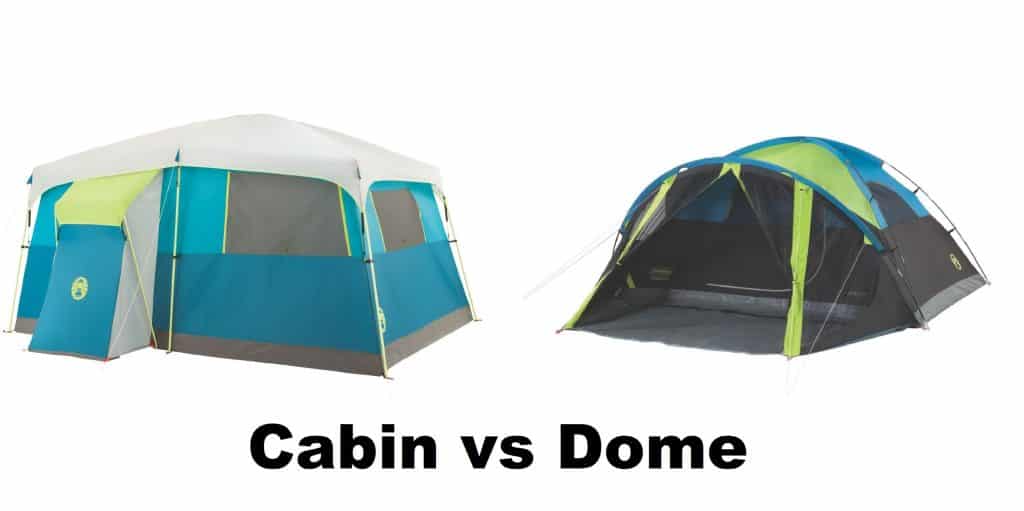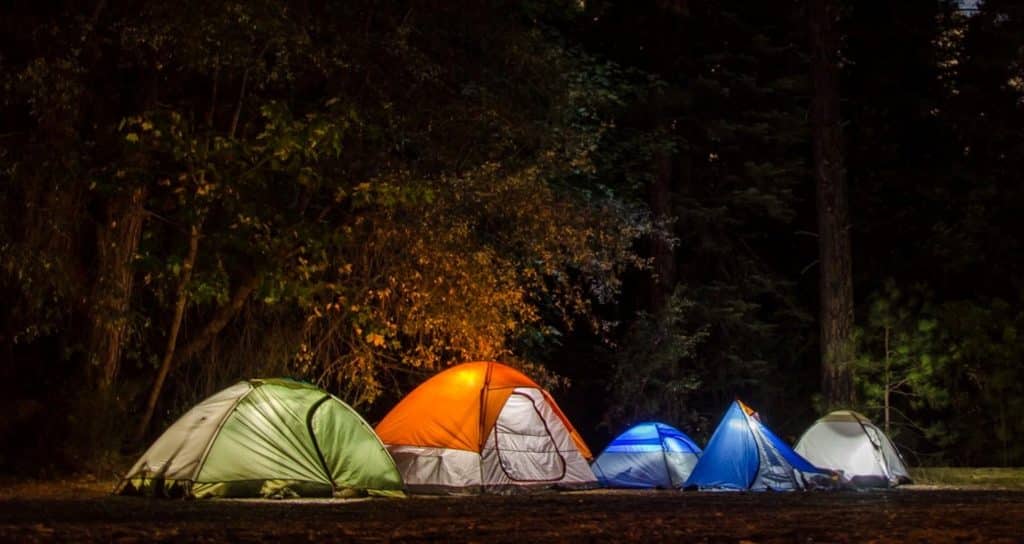First time campers are often overwhelmed the first time they go into a camping store. With a bewildering choice of equipment that would confuse any first time camper. Do you really need that 12 person tent that boasts the comforts of home? Probably Not, but you still need to choose between a host of big tents, small tents, sleeping bags, and thousands of accessories that all look the same.
Don’t worry picking out a tent is easier than you would think. With a little bit of planning you can find exactly the tent you need.
How To Choose a Tent
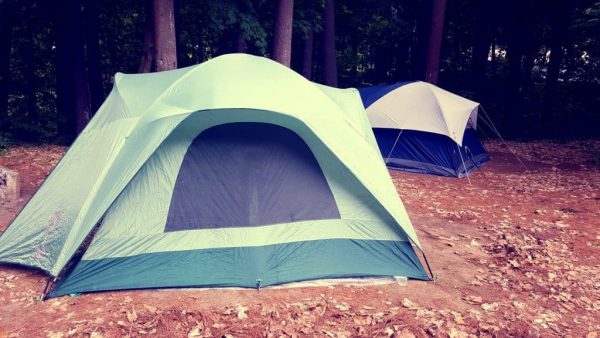
Choosing a tent really doesn’t have to be all that difficult. It’s not going to be quite as difficult as buying your first house, but figuring out what tent you need may seem confusing. Don’t even start looking at tents until you’ve considered all these questions.
- How Many People Will Use The Tent? One Person? Two? Three? Maybe even your extended family? There are tents to accommodate just about any family. Just remember that larger tents are going to be a lot heavier the next time you’re out backpacking.
- Are You Bringing Along Kids? If you’re bringing along kids you need to decide if they’re old enough to sleep in their own tent. If not I would highly recommend buying a larger tent than you think you’ll need. Something like Coleman’s 8 Person Montana Tent is perfect for 2-3 younger kids. Remember you probably won’t be packing light with kids coming along.
- What Time of Year Will You Be Camping? Are you just going to be camping during the summer? Or will you be camping during the colder months. Unless You plan on going out in the winter you’ll probably be fine with a standard all season tent.Something like Coleman’s Budget Tents are perfect for the occasional camping trip.
- How Are You Transporting it to Your Site? Are you going to be car camping a short distance away? Or will you be backpacking a few miles into the wilderness? If you plan on hiking out to your spot you’ll want to look for a lighter setup. A smaller Tent like this ultralight ALPS Mountaineering Tent is perfect for seasoned backpackers.
- Hot VS Cold Climates: In warmer climates you’re going to want a tent that keeps you cool. Some tents even come with built in sunrooms and oversized screen rooms. In colder climates you’ll have to focus more on waterproofing and blocking winds.
- What Kind of Quality Do You Need? Figure out if you need a tent that will last for a few weekends or last for years. In the camping world you really do get what you pay for. Entry level 50 dollar tents just aren’t going to last more than a few years. Cheap tents are meant for the occasional outing, not the 1+ weekend a month camper. Do yourself a favor and buy the best tent that you can afford.
- Hows Your Setup and Disassembly Skills? Practice is the only way you’re going to get good at setup and disassembly. If you’re not used to camping setup your tent in the yard a few days before your trip. If that doesn’t work for you a few companies have popup tents. Coleman’s 4 Person Popup Tent can be setup and taken down in under 30 seconds. It’s perfect for short weekend trips, festivals and car camping.
Family Tents
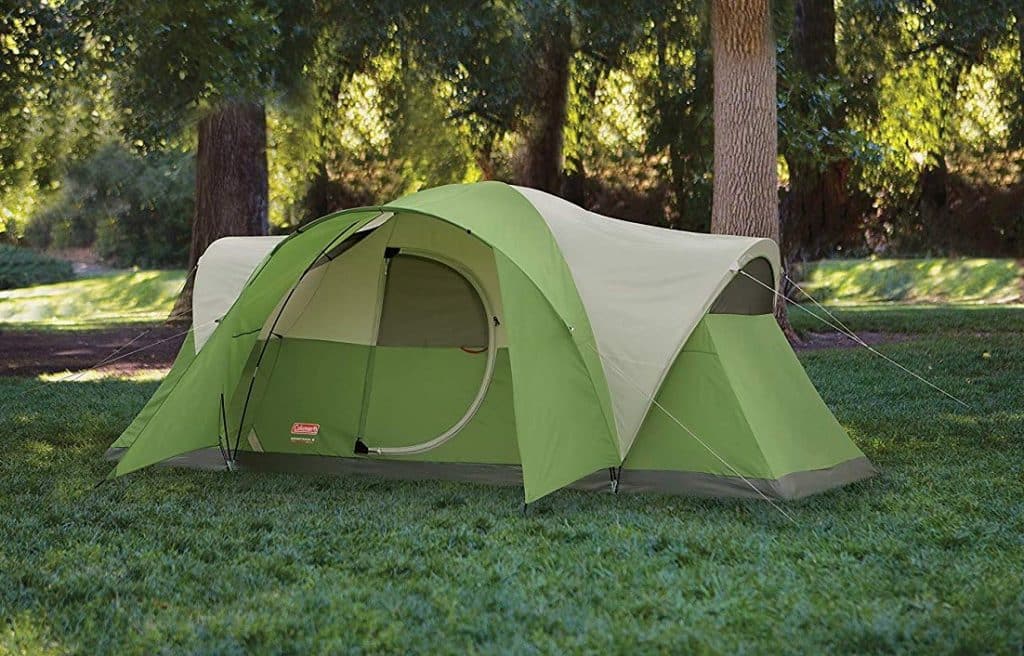
Camping is easily one of the most family friendly activities you can find. Until your kids get old enough to camp in their own tent, you’ll probably need a larger family style tent. Larger tunnel and dome style tents like Coleman’s Montana 8 Person tent are perfect for the whole family. Designed to hold multiple air mattresses and spacious enough to fit a large family.
Large Frame tents are going to be harder to transport deep into the wilderness, but they’re perfect for the average camping trip. They’re heavy, take up a lot of space and are difficult to put up, but you can sure pack in a lot of people.
Backpacking Tents
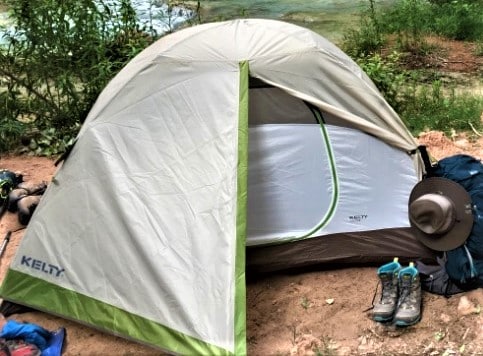
Finding the perfect backpacking tent is going to be harder than you would expect. Most likely you’ll be hauling a bunch of gear deep into the wilderness, so you’ll have to keep your tent light. Every pound counts on long hikes through the wilderness.
Personally I like to limit my backpacking tent to a maximum of 5 lbs. For the past couple years I’ve been carrying the Kelty Salida 2 Person Tent. At under 4 lbs it’s the perfect weight for long trips.
Mountain and Cold Weather Tents
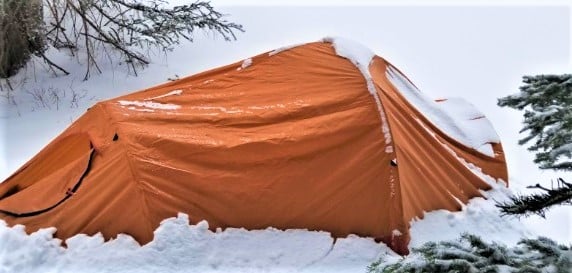
If you plan on spending any time out in the cold you’ll need to get a better tent. When you camp in cold weather and other exposed places you’ll need a stronger tent. Ridge and Geodesic Dome tents are going to offer the best designs for this type of situation.
The best part about dome style tents is that they use self supporting structures. Offering a lot of room with a small footprint. In moderate weather you won’t even need to use guylines to support the tent. If you do a lot of camping and occasionally go out in bad weather you might want to consider a Dome style tent. For the money it’s hard to beat Alps Mountaineering’s 2 Person Tasmanian Tent.
Where Tents Fail
Your average $20-$50 tent isn’t going to last forever. You really can’t expect it to last more than a dozen or so camping trips. After a while you’ll notice the occasional rip in fabric, zippers stop working, or maybe the poles even break.
Thankfully most of these problems are subtle nuisances that can be easily fixed, but after a while they tend to add up. The only solution is to spend a little more cash on a better tent. Expect to spend about $150 or more on a decent tent that should last for years.
Unfortunately most people can’t drop that kind of cash on a tent. So what should you look for in a tent to prevent damage? How do you fix some of these problems?
- Tent Poles: I can’t even count the number of tents I’ve gotten rid of because of bad tent poles. Tent poles bend and break under heavy wind, the elastic wears out or they might just snap for no good reason. There’s a reason most winter tents use one continuous pole system, they’re less likely to break. Throughout the years I’ve found duct tape and a brace is the only solution for fixing broken tent poles in the field. Once you get home replace the shock cord or maybe even a few of the poles.
- Zippers: If a tent has a cheap zipper you can almost guarantee the rest of it is shoddy as well. Look for reinforced zippers that are going to be much less likely to break. When a zipper breaks on a tent you might as well just throw it out. It’s going to be expensive to fix and probably will never work right again.
- Rips and Tears: If you go out in the woods often enough you’ll eventually get a rip or tear in your tent. Maybe a branch pokes its way through the bottom or your belt snags on the wall. You’ll eventually have to deal with a tear. In the short term place some duct tape over the hole until the end of your trip. Once you get home you can fix it with a cheap Coleman Tent Repair Kit.
- Mold and Mildew: Whatever you do don’t put your tent away wet. Moisture will always lead to mold, mildew and eventual rot. In the morning you’ll always have a little bit of condensation on the inside of your tent. It’s important to let it dry before packing up. If it’s raining or you don’t have the time to let it dry naturally bring it home and setup in your front yard for a few hours.
Tent Sleeping Capacity
Tents come in all shapes and sizes, so it’s important to pick the right tent for your individual needs. When choosing your first tent consider your group size and choose accordingly. Keep in mind that there’s no industry standard for tent size and manufacturers exaggerate their actual capacity.
Unless I’m solely taking my tent backpacking I always aim for an advertised rating 2-3 people higher than what I actually need. You’ll eventually bring along an extra relative/friend or maybe you just want a little bit more room. You’ll sleep better if you have a little more room to move around at night.
3 Season Vs 4 Season Tents
When most people go into a store they’ll walk out with a 3 Season tent. 3 Season tents are designed for moderate temperatures found in late spring, summer and fall. If you only plan on camping when the weather is above 45 degrees, save your money and buy a 3 season tent.
Most 3 season tents are designed entirely with summer in mind. They have a lot of air vents that let in a cool breeze, but keep out insects. The only time you might run into trouble is especially dusty or sandy campgrounds. All that mesh will really let in the dirt.
Why You Should Get a 3 Season Tent
- Provide a cool breeze during the heat of summer.
- Offer plenty of privacy when camping in busy campgrounds and festivals
- Shield you from the bugs during the rainy season
- Protect you from light snow, rain and wind(probably won’t be strong enough for northern winters and bad storms)
Consider a Hybrid 3-4 Season Tent
Most people aren’t going to do much camping during the winter (Check out some of my favorite winter camping tips),but that doesn’t mean you need to end your season early. Extended season (3-4 Season Tents) offer sturdier support and decent ventilation.
4-Season Tents
I love camping throughout the winter, and I couldn’t do it without a 4 season tent. Designed to withstand strong wind and heavy snowfall, 4 season tents can be used all your long. Mountaineering tents are going to be used whenever the weather gets bad or if you’re backpacking at high altitudes.
Most of the time they’ll use heavier fabric and stronger/more poles than 3 season tents. Engineered like a geodesic dome to stop snow from collecting on the roof. Without all the vents and screens 4 season tents are going to be stuffy in mild weather, but you won’t want anything else in the cold.
Cabin Style Tent vs Dome Tents
Peak height is easily one of the most overlooked features of a tent. It’s hard to quantify just how nice it is to be able to fully stand up inside your tent. You can change clothes without squatting and easily pack up all your gear. If you’re looking for tall ceilings you can’t beat a cabin style tent.
Cabin Style Tents: Most cabin style tents are going to feature tall almost vertical style walls. This allows the manufacturer to increase the overall peak height and livable space. The only downside is that cabin style tents aren’t going to offer the same protection in bad weather.
Dome Tents: Dome style tents have a tall center, but curve down to the edge of the tent. You might have enough room for multiple people to sleep, but you’ll lack livable space. If you’re going to do any spring or fall camping you want to buy a dome tent.
